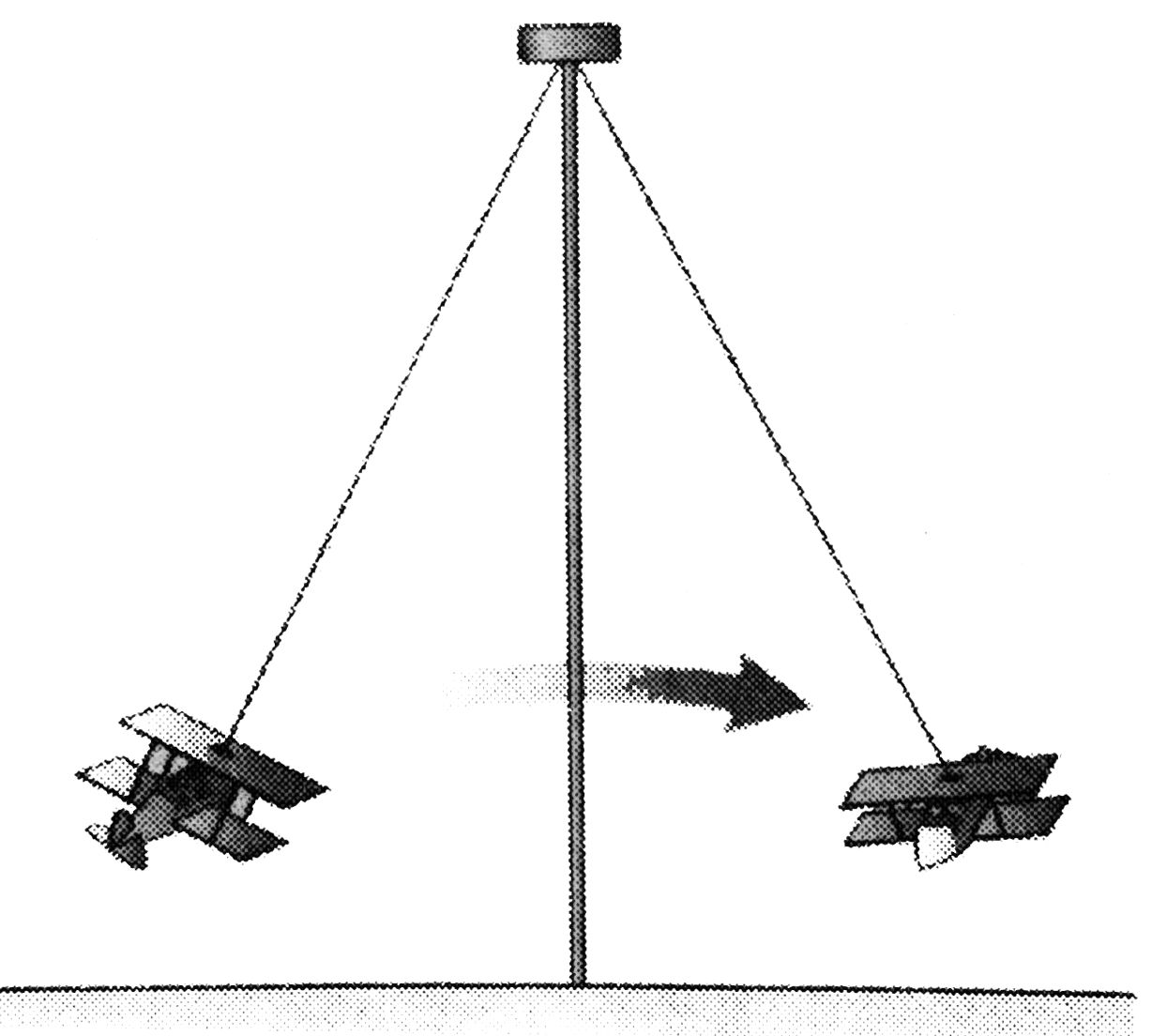Two identical steel cubes (masses 50g, side 1cm) collide head on face to face with a speed of 10 cm/ s each . Find the maximum compression of each. Young's modulus for steel =Y=2×1011N/m2.
To solve the problem of finding the maximum compression of each steel cube after they collide, we can follow these steps:
Step 1: Gather the Given Data
- Mass of each cube, m=50g=50×10−3kg
- Side length of each cube, L=1cm=0.01m
- Speed of each cube before collision, v=10cm/s=0.1m/s
- Young's modulus for steel, Y=2×1011N/m2
Step 2: Calculate the Initial Kinetic Energy
The initial kinetic energy (KE) of the two cubes can be calculated using the formula:
KE=2×12mv2=mv2
Substituting the values:
KE=(50×10−3)×(0.1)2=50×10−3×0.01=5×10−4J
Step 3: Use Hooke’s Law
According to Hooke's Law, the relationship between stress and strain is given by:
Y=FLAΔL
Where:
- F is the force applied,
- A is the cross-sectional area,
- ΔL is the change in length (compression).
The cross-sectional area A of the cube is:
A=L2=(0.01)2=0.0001m2
Step 4: Express Force in Terms of Compression
From Hooke's Law, we can express the force as:
F=YAΔLL
Let k be the compression constant:
F=kΔL
Equating the two expressions for force:
kΔL=YAΔLL
Cancelling ΔL (assuming ΔL≠0):
k=YAL
Step 5: Substitute for k
Substituting A=L2:
k=YL2L=YL
Thus,
k=Y×0.01
Step 6: Calculate the Maximum Compression
The total potential energy at maximum compression is equal to the initial kinetic energy:
kΔL2=KE
Substituting for k:
(Y×0.01)ΔL2=5×10−4
Rearranging gives:
ΔL2=5×10−4Y×0.01
Substituting Y=2×1011:
ΔL2=5×10−4(2×1011)×0.01
ΔL2=5×10−42×109=2.5×10−13
Taking the square root:
ΔL=√2.5×10−13=5×10−7m
Final Answer
The maximum compression of each steel cube is:
ΔL=5×10−7m
---
- Mass of each cube, m=50g=50×10−3kg
- Side length of each cube, L=1cm=0.01m
- Speed of each cube before collision, v=10cm/s=0.1m/s
- Young's modulus for steel, Y=2×1011N/m2
The initial kinetic energy (KE) of the two cubes can be calculated using the formula:
KE=2×12mv2=mv2
Substituting the values:
KE=(50×10−3)×(0.1)2=50×10−3×0.01=5×10−4J
According to Hooke's Law, the relationship between stress and strain is given by:
Y=FLAΔL
Where:
- F is the force applied,
- A is the cross-sectional area,
- ΔL is the change in length (compression).
A=L2=(0.01)2=0.0001m2
From Hooke's Law, we can express the force as:
F=YAΔLL
Let k be the compression constant:
F=kΔL
Equating the two expressions for force:
kΔL=YAΔLL
Cancelling ΔL (assuming ΔL≠0):
k=YAL
Substituting A=L2:
k=YL2L=YL
Thus,
k=Y×0.01
The total potential energy at maximum compression is equal to the initial kinetic energy:
kΔL2=KE
Substituting for k:
(Y×0.01)ΔL2=5×10−4
Rearranging gives:
ΔL2=5×10−4Y×0.01
Substituting Y=2×1011:
ΔL2=5×10−4(2×1011)×0.01
ΔL2=5×10−42×109=2.5×10−13
Taking the square root:
ΔL=√2.5×10−13=5×10−7m
The maximum compression of each steel cube is:
ΔL=5×10−7m
Similar Questions
How much will a 30m steel tape 1 cm wide and 0.05 cm thick stretch unde a pull of a force of 300N if Young's modulus of steel is 2×1011Nm−2
View SolutionAn amusement park ride consists of airplane shaped cars attached to steel rods. Each rod has a length of 20.0m and a cross-sectional area of 8.00cm2. Young's modulus for steel is 2×1011N/m2.
a. How much is the rod stretched (in mm) when the ride is at rest ? (Assume that each car plus two people seated in it has a total weight of 2000N.)
b. When operating, the ride has a maximum angular speed of √195rad/s. How much is the rod stretched (in mm) then?
 View Solution
View SolutionWhat force is required to stretch a steel wire to double its length when its area of cross section 1 cm2 and Young.s modulus 2×1011N/m2.
View SolutionA steel wire of length 4 m and diameter 5 mm is strethed by 5 kg-wt. Find the increase in its length, if the Young's modulus of steel is 2×1012 dyne cm2
View SolutionA steel wire of length 600cm and diameter 1.2 mm is stretched through 4 mm by a load. Calculate the work done. Young's modulus of steel =2×1011Nm−2.
View SolutionA truck is pulling a car out of a ditch by means fo a steel cable that is 9.1m long and has a radius of 5mm. When the car just beings to move, the tension in the cable is 800N. If Young's modulus for steel is 2×1011N/m2 then the strecth in the cable is (neraly)
View SolutionA 6kg weight is fastened to the end of a steel wire of un stretched length 60cm. It is whirled in a vertical circle and has an angular velocity of 2rev/s at the bottom of the circle. The area of cross - section of the wire is 0.05cm2 . Calculate the elongation of the wire when the weight is at the lowest point of the path . Young's modulus of steel =2×1011N/m2 .
View SolutionCalculate the speed of longitudinal wave in steel. Young's modulus for steel is 3×1010N/m2 and its density 1.2×103kg/m3
View SolutionCalculate the speed of longitudinal wave in steel. Young's modulus for steel is 3×1010N/m2 and its density 1.2×103kg/m3
View SolutionIf two cubes each of side 6cm are joined face to face, then find the volume of the resulting cuboid.
View Solution

